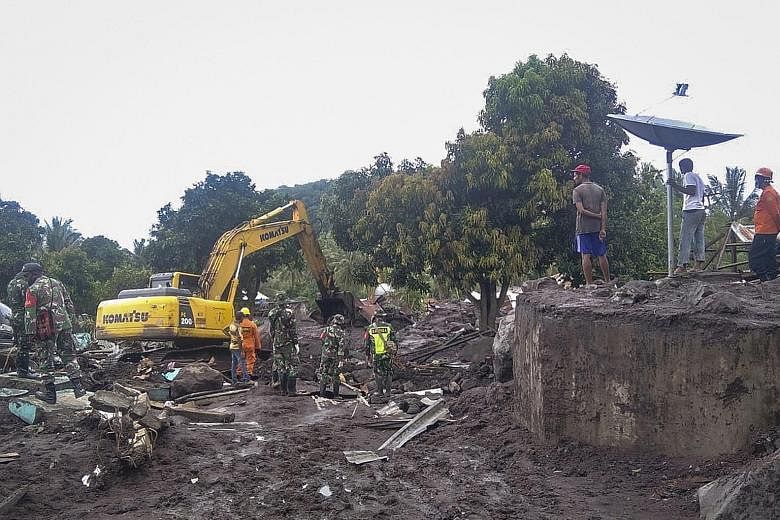Rising sea temperatures due to global warming were responsible for tropical cyclone Seroja, which triggered devastating floods and landslides in East Nusa Tenggara islands on Sunday, Indonesia's weather agency has said.
More than a hundred people lost their lives in the disaster.
The 10th cyclone to hit the country since 2008 was the strongest to date, driven by a 4 deg C spike in the temperature of the surrounding waters, said Meteorology, Climatology and Geophysics Agency (BMKG) chief Dwikorita Karnawati on Tuesday. She added that Seroja "is the first one to bring tremendous impact because it hit the land. It's uncommon".
Indonesia's last major tropical cyclone, Cempaka, formed in the sea in November 2017, and largely dissipated when it hit landfall.
But Seroja struck the islands even as it was still developing, with wind speeds in the eye of the storm reaching 85kmh, said Professor Dwikorita.
BMKG yesterday said the cyclone was in the Indian Ocean, south of West Nusa Tenggara, and was moving south-west away from Indonesia towards Australia.
Seroja is expected to trigger rainfall of moderate to high intensity, along with lightning and strong winds, across central and eastern parts of Java, Bali, East and West Nusa Tenggara until tomorrow.
Rough seas with high waves have been forecast in the waters surrounding East Nusa Tenggara and West Nusa Tenggara.
Prof Dwikorita noted that the frequency of tropical cyclones in Indonesia has intensified. They used to occur once in two to four years on average, but since 2017, they are appearing once or twice each year.
"We need to realise that mitigation to global warming is necessary. Otherwise, such (tropical) cyclones will become regular occurrences each year," she said.
Dr Andung Bayu Sekaranom, secretary at Gadjah Mada University's Centre for Natural Disaster Studies, said that climate change would raise the intensity of cyclones in terms of wind speed and rainfall.
Coastal areas will bear the brunt of storm surges from tidal waves, accompanied by strong winds.
"An early warning system for high waves is beneficial to alert residents or fishermen to avoid coastal activities," he told The Straits Times, adding that coastal protection plants could help alleviate the impact of storm surges.
Further inland, one should expect worsening floods and landslides, said Dr Andung.
Consequently, he said, mitigation efforts must focus on the management of watersheds, which have been damaged by land conversion, particularly deforestation.
As many as 124 people were killed following the weekend disaster in East Nusa Tenggara, Dr Raditya Jati, National Disaster Management Agency spokesman, said yesterday. Two people were killed in West Nusa Tenggara.
More than 70 people were still missing across East Nusa Tenggara. At least 129 were injured, and over 13,000 people were displaced by the disaster.

